How Long To Ferment Cabbage For Sauerkraut
Bacterial succession occurs when using beneficial bacteria to produce fermented vegetables, like sauerkraut. This process occurs at room temperature and in three stages that take 2 to 4 weeks.
There is a range in the time because “room temperature” varies by region. Homemade sauerkraut fermented at room temperatures between 60° F and 80° F usually takes 21 to 28 days. If it is warmer, so above 80° F, the process is a little faster.
Bacterial succession, a three-stage fermentation process, makes fermented cabbage safe, delicious, and nutritious! Allowing cabbage to ferment for a long enough time creates a very selective environment within the fermentation vessel. It’s salty, acidic, and oxygen-free.
This selective environment inhibits the growth of harmful microbes, and only beneficial bacteria can thrive.

How Long to Ferment Sauerkraut: Learn the Sauerkraut Fermentation Process
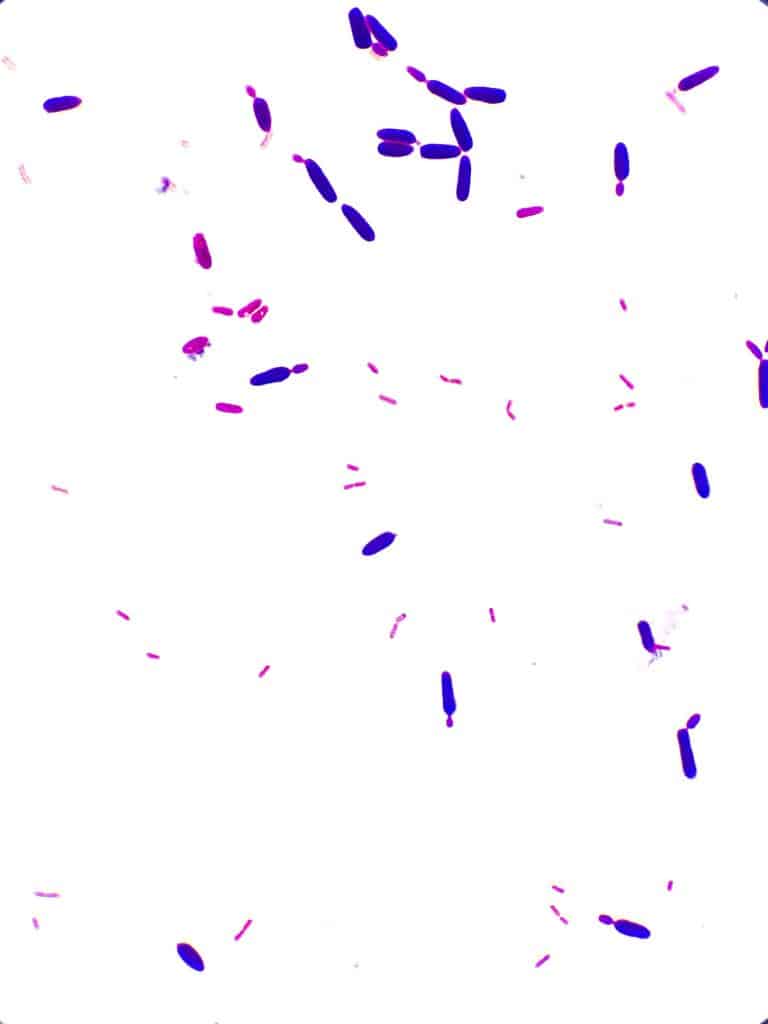

Stage One of Sauerkraut Fermentation
Stage one of sauerkraut fermentation begins as soon as you add the salt to your cabbage and lasts for approximately two days. To make a batch of sauerkraut, you first remove the outer leaves from the head of cabbage, chop it, and weigh the shredded cabbage with a kitchen scale.
You determine the correct amount of salt to add by weighing the cabbage and any water added in grams, then multiplying by 2.5%. I always add a bit of water to my sauerkraut to ensure enough brine to cover the cabbage. You can read more about measuring salt in fermentation recipes by clicking here.
Do you need a starter culture to make sauerkraut?
No! There are many bacteria naturally on your vegetables that can tolerate salt, and the ones that utilize oxygen proliferate first. Depending on any other ingredients used, the total salt concentration and ambient room temperature, this first stage of fermentation includes microorganisms in the orders Bacillales, Pseudomonadales and Enterobacterales.
Gram-negative rod-shaped bacteria, like Enterobacter cloacae and Erwinia herbicola (aka Pantoea agglomerans), thrive in this stage (these are the red-colored bacteria pictured above). Many different yeasts are also common during this stage (the larger purple microbes pictured above).
In the brine-vegetable mixture, the oxygen-using bacteria metabolize all the oxygen present. With all the oxygen used up, the brine is now an anaerobic (oxygen-free) environment. Once all the oxygen is used up by stage one microbes, and the brine is anaerobic, stage two begins.


Stage Two of Sauerkraut Fermentation
The second stage of sauerkraut fermentation begins about three to five days past the start of fermentation. Sometimes it’s quicker, depending on the temperature.
At this time, the stage one bacteria have died off, and Leuconostoc bacteria populate and dominate the fermenting cabbage. This stage is easy to recognize because these bacteria make things bubbly, and the cabbage color changes. Leuconostoc spp. are lactic acid bacteria that tolerate salt and acid. They are Gram-positive cocci-shaped, heterolactic fermenters.
Heterolactic means that Leuconostoc makes acetic acid, ethanol, carbon dioxide, lactic acid, and glycerol. When these bacteria thrive, they can also metabolize malic acid if it’s present. Carbon dioxide production is what makes things so bubbly.
Be sure to burp the fermentation jar during this stage if using a sealing lid, like a mason jar lid. The environment becomes more acidic through stage two, leading us into stage three.


Stage Three of Sauerkraut Fermentation
This stage begins after about seven to twelve days from the start of fermentation. Again, this fermentation time depends on the temperature and ingredients used.
The bacterial population mainly consists of Lactobacillus species in stage three (pictured above). Lactobacillus species are salt-tolerant, acid-tolerant, homolactic fermenters. These bacteria are homolactic fermenters because the one product from their metabolism of cabbage is lactic acid.
When these beneficial bacteria consume shredded cabbage and make lactic acid, this results in well-preserved sauerkraut with a pH of about 3.7. The lactic acid produced in this stage is what fully preserves the cabbage and inhibits the growth of harmful bacteria. Once it reaches stage three, the fermentation environment is anaerobic, salty, and acidic. This environment is very selective and only allows for the growth of good bacteria.
So How Long Does it Take to Make Sauerkraut?
You want to give your sauerkraut time to be in stage three so that the lactic acid bacteria have adequate time to produce lactic acid and beneficial bioactive compounds. We always wait about two weeks after this stage begins because that time yields a safe pH and a delightful sour taste.
Thus, we aim for a total fermentation time of 21 to 28 days. It is okay to vary this time just a bit, though.


The Health Benefits of Homemade Sauerkraut
It is usually acceptable to taste test at about 12 days. If you want the most health benefits, it’s best to continue fermenting for t1 to 28 days.
Lactobacillus metabolism in fermentation takes time. Fermentation time determines if Lactobacillus can produce GABA, phenolic compounds, bioavailable minerals, vitamins, exopolysaccharides, and bioactive peptides! A fermentation time that is too short robs you of SO MANY beneficial postbiotic compounds.
Cabbage fermented between 14-21 days has three times more beneficial bioactive compounds than cabbage fermented in less than 14 days.
How to Prepare Safe Fermented Vegetables
As long as you set the beneficial bacteria up for success, they will keep the fermenting vegetables safe for you. You set them up for success in a couple of ways:
- Salt Concentration: This is the most important factor to ferment vegetables. Using the right amount of salt is vital to making healthy homemade sauerkraut. To get a proper salt concentration you must weigh all of your ingredinet and salt. Generally, a 2 to 2.5% total salt concentration is best. This concentration is sometimes higher, 3%-5% when fermenting other types of vegetables, like cucumbers or peppers. You can read more about salt concentration HERE.
- Anaerobic Environment: An anaerobic environment during cabbage fermentation is essential. It’s simple to maintain an anaerobic enviornment by using a fermentation weight. A fermentation weight keeps all of the cabbage sumberged in the brine for the duration of fermentation. During the bubbly stage, you do have to burp the fermentation jar and press everything back down into the brine.
- Keep things clean: When things get bubbly, you may need to rinse off your lid and clean up the sides of the jar daily. This will help prevent any unwanted mold growth on the surface.
The Best Cabbage to Use for Sauerkraut
- Organic cabbages from small local farms are the best for fermentation.
- Cabbages grown in cool temperatures are best, because the hold more water.
- If you can grow your own cabbage at home, I highly suggest trying it. This will make the freshest and most benfical homemade sauerkraut.
- You can try many types of cabbage to make sauekraut. My favorites are savoy and green cabbage. Nappa cabbage works well too, but it makes a softer sauerkraut.
- If you are just starting out, use green cabbage, so you can tell how the color develops. Red cabbage makes a good sauerkraut, but it’s harder to see a color change.


How Long to Ferment Sauerkraut vs How Long to Ferment Different Vegetables
How long to ferment sauerkraut may not be the ideal timeline for other types of vegetables. Here are some other timelines are for different vegetables fermented at a moderate temperature between 60° and 80° F.
Vine Growing Vegetables: This includes any vegetable that grows from a blossom or flower above the ground. For most vine-growing vegetables, a safe fermentation time is about 14-21 days.
Low Growing and Cruciferous Vegetables: If it’s cabbage or grows like cabbage, above the ground and low to the ground, then 21 days of fermentation works well. Cruciferous vegetables reach a safe acidity during the second stage of fermentation at about 7-14 days, so it is safe to start taste testing. For full health benefits and flavor, continue to ferment for 21 to 28 days.
Root Vegetables: Things get dicey with root vegetables. Sometimes you can successfully ferment root vegetables the same way as cabbages and vine growing vegetables, but most root vegetables contain too many starches and sugars for this method. If you try to ferment root vegetables, like beets, in the same way as cabbage, you may end up with alcohol.
Occasionally, if you leave something like this long enough, it can develop into a vinegar-like substance, but not always. For food safety reasons, I do not advise doing this. Follow this blog recipe if you want to ferment carrots and root vegetables.
Methods influence how long to ferment sauerkraut
Natural fermentation precedes human history, I know. Since ancient times, humans have exploited the fermentation process. I think it’s only reasonable that, in our modern times, we allow ourselves the space to respect and learn about the microbes of fermentation.
We should choose to understand microbes to harness fermentation in the healthiest way possible. Also, let’s not irresponsibly culturally appropriate recipes and instead bring pride and respect to the long-standing culture of fermented foods by understanding the process thoroughly.
Traditional Fermentation Recipes from Other Cultures
How long to ferment sauerkraut and other vegetables may vary in traditional recipes. Some traditional fermented foods, like Baechu Korean kimchi and Dưa Chua Vietnamese fermented vegetables, have a swift fermentation time. The quicker fermentation process is attributed to specific ingredients, variables, and traditional methods.
Dưa Chua, for instance, is made by drying vegetables (usually cabbage or mustard greens) in the sun then submerging them in a brine that includes salt and sugar. Dưa Chua is usually fermented for about four days at 80-95° F.
People make Baechu Korean kimchi by soaking napa cabbage in a high salt concentration for 12 hours before rinsing and rubbing with a paste made of salted shrimp, fish paste, gochugaru, sugar, ginger, garlic, and scallions. Then it is packed into an air-tight fermentation crock and enjoyed after only three days of fermentation.
In both of these examples, the ingredients, methods, and temperature are significant factors influencing the fermentation time.
If you want to make traditional fermentation recipes from other cultures, some of which have quick fermentation times, find a teacher from that culture who provides recipes (there are so many) and follow EVERY step, method, temperature, time, and ingredient. These types of recipes have been time-tested and perfected over thousands of years.
Other articles you may be interested in:
- The Benefits of Eating Sauerkraut Daily
- How Long to Ferment Sauerkraut by Holly Howe
- Roasted Garlic Sauerkraut with Black Pepper
*Note: by using our website you have agreed to our Terms Of Use. All words and images presented here are copyrighted.*
References:
Frias, Juana & Martinez-Villaluenga, Cristina & Peñas, Elena. (2016). Fermented Foods in Health and Disease Prevention.





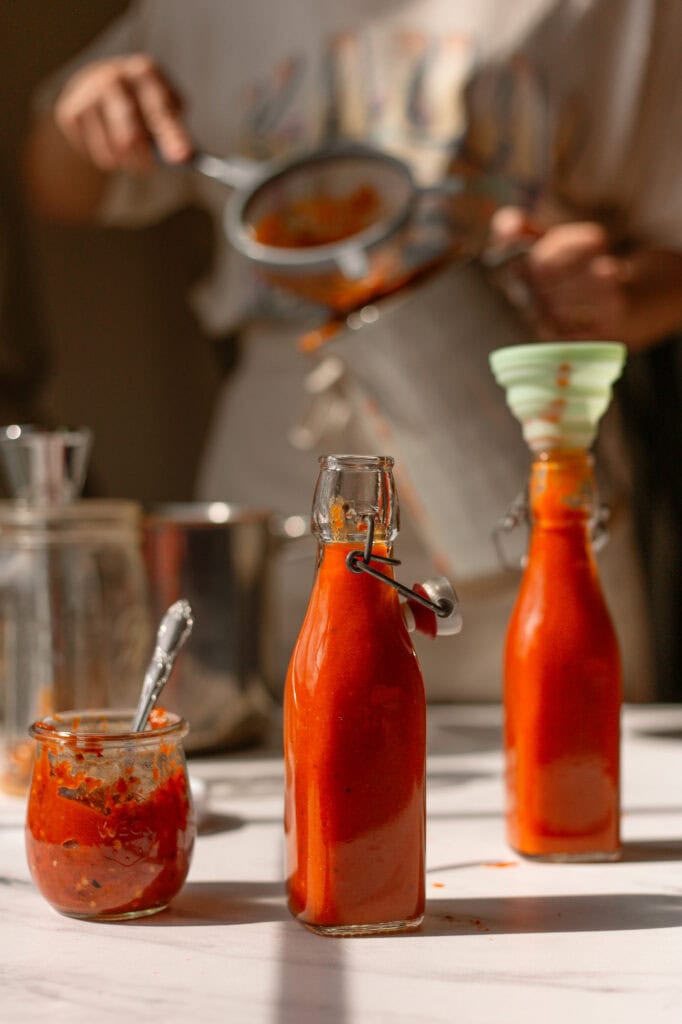
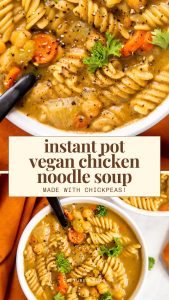


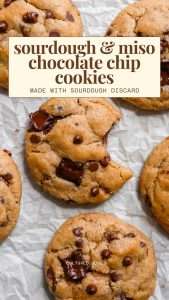


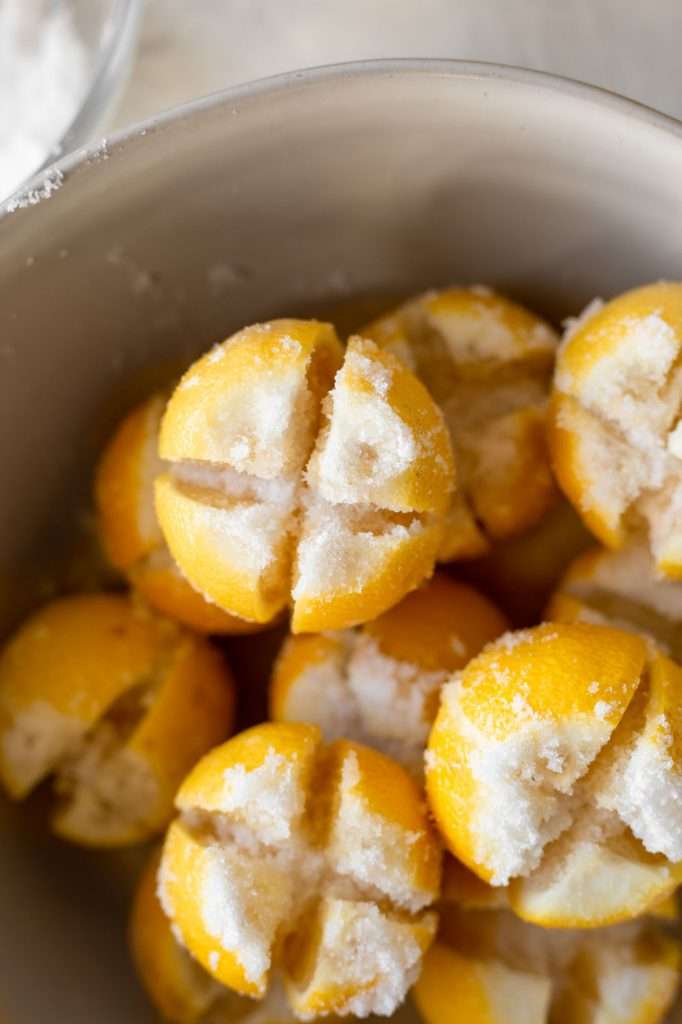
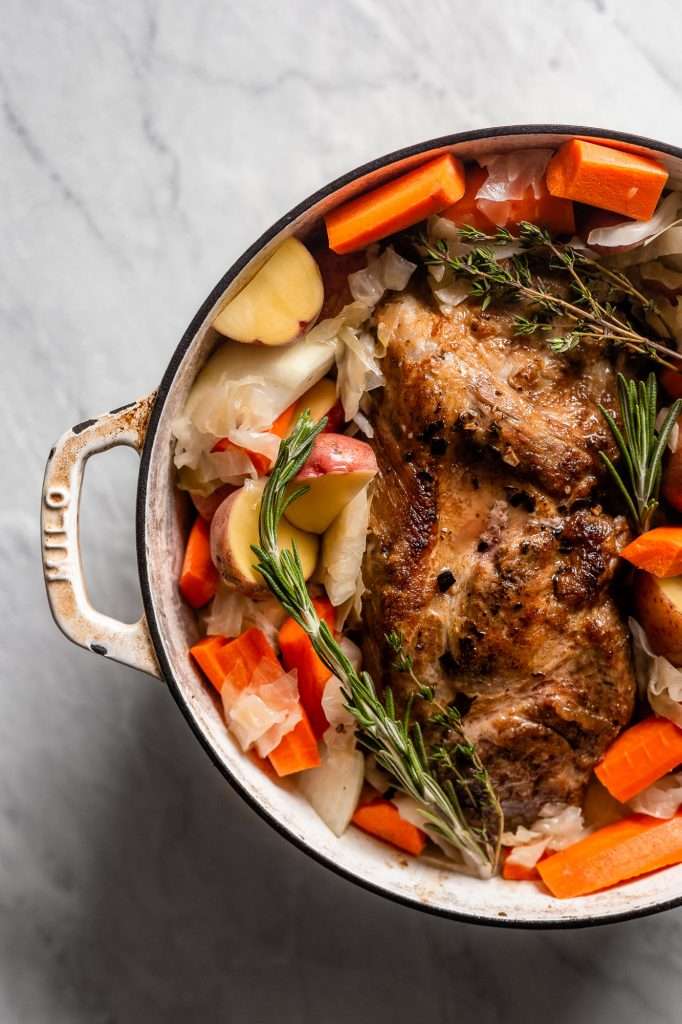
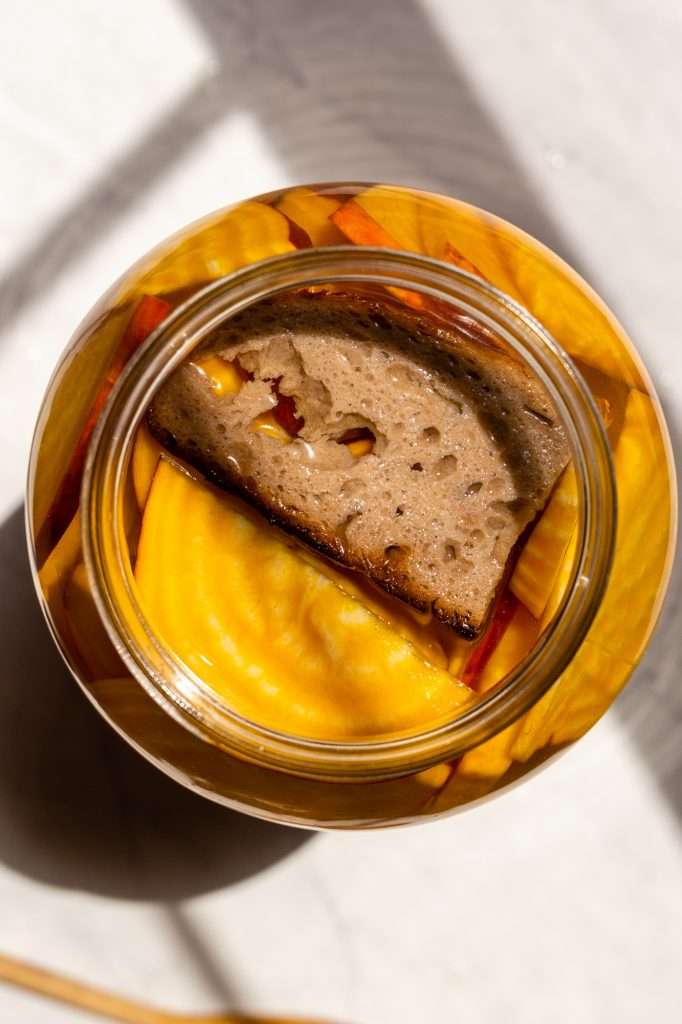


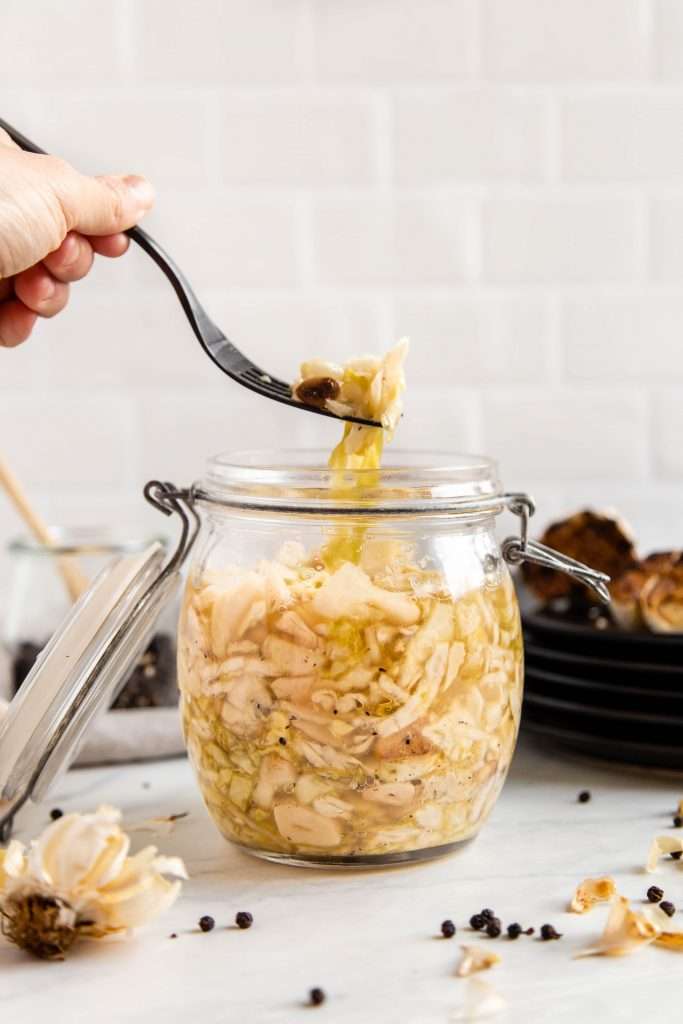


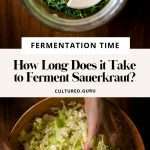
I am wanting to try making Kimchi. It is a version that has no fish paste. The recipe says to ferment 3-5 days then move to cold storage. Your article seems to indicate ferments should remain at room temp for at least 2 weeks. My kitchen is currently around 70-75 degrees (it gets much warmer in the summer.) Can I get the a good ferment at 3-5 days room temp and then 2-3 weeks in the fridge?
The fermentation timelines I discuss here are based on the vegetable fermentation recipes and methods I teach here on our blog. And yes, it is my expert opinion that for optimal health benefits and quality fermented vegetables should ferment at room temperature for at least 14 days.
If you would like to make traditional Korean kimchi, that is a different process from what I teach here. Traditionally, Chinese cabbage is brined in 10% salt for 24-48 hours before use in a kimchi recipe. This completely changes the microbiome of the vegetables and the process of wild fermentation. A lot of people enjoy their Korean kimchi bubbly, so they refrigerate and eat it in what I identify as the second stage of fermentation here.
I love your articles, thank you for sharing your knowledge! Aside from the recipes, these articles are not printer friendly. It would be great to have an option to print these articles (to printer or PDF) with a readable format.
I’ll see if Jon can figure something out for that!
I actually find the cauliflower and broccoli have a great taste after 3 days of fermentation. I live in Spain so ambien temperature is about 25-28C . Is this,time is too short for fermentation?
Interesting! I’ve found that all broccoli, no matter how long it is fermented stinks and is not very good haha. I do think three days is too short at 25 to 28° C. Have you ever checked the pH? If it’s below 4, it’s safe to eat.
Hi would the guidelines be the same if I was going to ferment with whey instead of water, I am thinking of ways to use up the by product from the local cheese factory, and would love some ideas that would bring extra health values to the food I serve
I don’t suggest fermenting vegetables with whey. You still need to use the proper amount of salt, and it does not speed up the process by any significant amount. The only potential benefit is whey can introduce more types of beneficial bacteria to the mix.
Very informative.
Do thin leafy vegetables, such as spinach, ferment faster?
No, the process will take the same amount of time. However, I don’t suggest fermenting dark green leafy vegetables on their own. It’s best to just incorporate things like spinach and kale into sauerkraut.
Awesome blog! On my fermentation journey, I finally found a rigorous source that explains the science behind it 🙂
Can you say more about carrots and radish? You wrote that you would advise against fermenting root vegetables. If I ferment them only for a couple of days (at my own risk of course), do they develop probiotics or other things that can positively influence gut health? My theory so far assumed that using a wide variety of vegetables is beneficial since the bacteria on the surface of each vegetable differ and therefore each develops different properties when fermented.
Hi there! I’m glad you are enjoying our blog!
Yes, I advise against fermenting carrots, radishes, and other root vegetables, like beets, on their own. Using the same method we use ferment sauerkraut, does not work well for root vegetables for a few reasons. These vegetables will still develop some good bacteria when fermented, but mostly yeast will thrive. Root vegetables contain a lot of usable sugars and starches that encourage yeast growth and alcohol fermentation. These vegetables don’t stay preserved as long through fermentation and are better off wild heirloom cultured, pickled, or mixed into a sauerkraut recipe.
I love your work. I read something you wrote once (I’m fairly sure) that probiotics in kraut are peaking around 3 months and even by 6 months are largely finished and in great decline. I want to verify I remembered that correctly and ask if krauts which are a few years old (still crunchy and tasty) have any probiotic value at that point?
I think this information is from a research paper I cited in one of my blog posts, not sure which one. The probiotic counts are highest at the 3-6 week mark and that’s when you should refrigerate fermented vegetables. In the fridge, there will always be some live probiotics but the CFUs decline over time, starting at around the 6 month mark in cold storage.
When fermentation is done for sourkraut, do I need to maintain brine above the kraut while in the fridge?
no, you don’t.